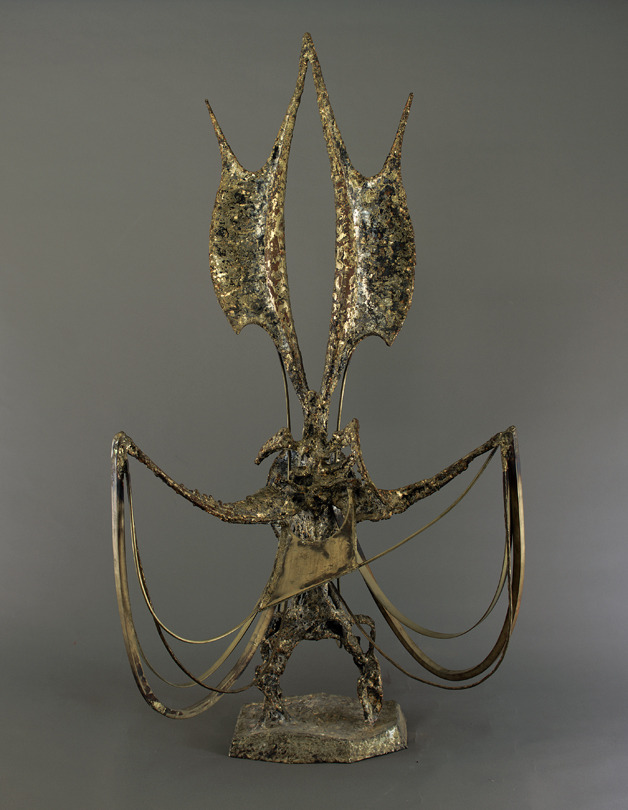
Ariadne
Theodore Roszak
Like most of the sculpture Theodore Roszak produced after World War II, "Ariadne" was intended as a metaphor for human emotion. Born in Poland but raised in the United States, Roszak trained at the Art Institute of Chicago and was highly influenced by the avant-garde art he encountered while studying in Europe in 1929 and 1930. Upon his return to America, he developed a sculptural style utilizing industrial materials to create streamlined, machinelike works. In the 1940s he worked as a welder in an aircraft factory; and by the end of the decade, as a result of his horror at the atrocities of war, Roszak's thinking about his art changed. He cultivated a more expressive, surrealist style, which he felt better addressed humanity's search for value and morality. This work is based on the Greek myth of Ariadne, who aided the hero Theseus in defeating the Minotaur, only to be abandoned by him. Roszak felt that this piece represented a critical moment in his artistic development, writing to the Academy on the occasion of its purchase in 1968: "I would take personal satisfaction in having "Ariadne" represent me."
Artist
Date of Birth
(1907-1981)
Date
1959-1960
Medium
Nickel silver brazed onto steel
Dimensions
58 3/4 x 28 1/2 x 28 1/2 in. (149.225 x 72.39 x 72.39 cm.)
Accession #
1968.10
Credit Line
Henry D. Gilpin Fund
Copyright
© Estate of Theodore Roszak / Licensed by VAGA at Artists Rights Society (ARS), NY
Category
Subject
More by
We're so excited you're planning to visit PAFA!
Make time for art — visit us Thursday to Sunday.
Before reserving your tickets, please review helpful information about museum hours, accessibility, building access, and special admission programs.
If you have any questions, feel free to reach out to us at visitorservices@pafa.org — we’d love to help!